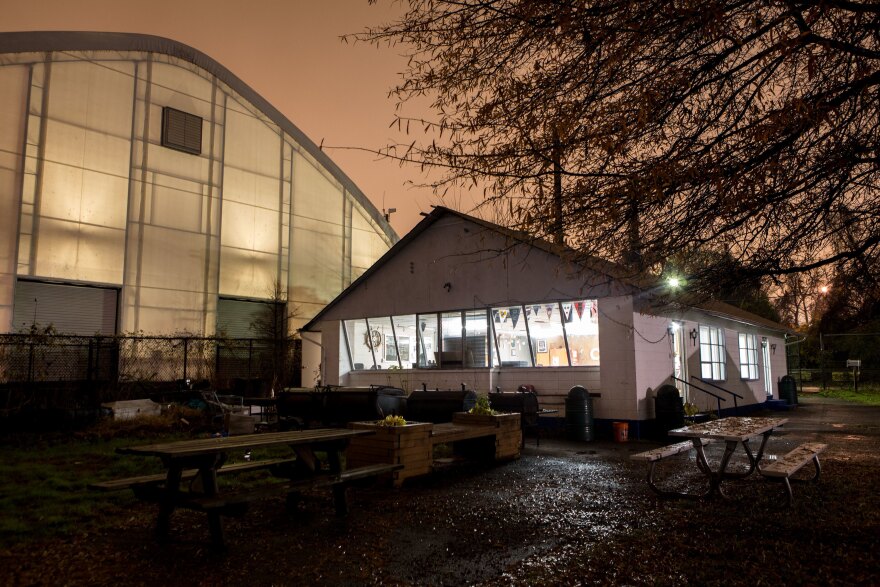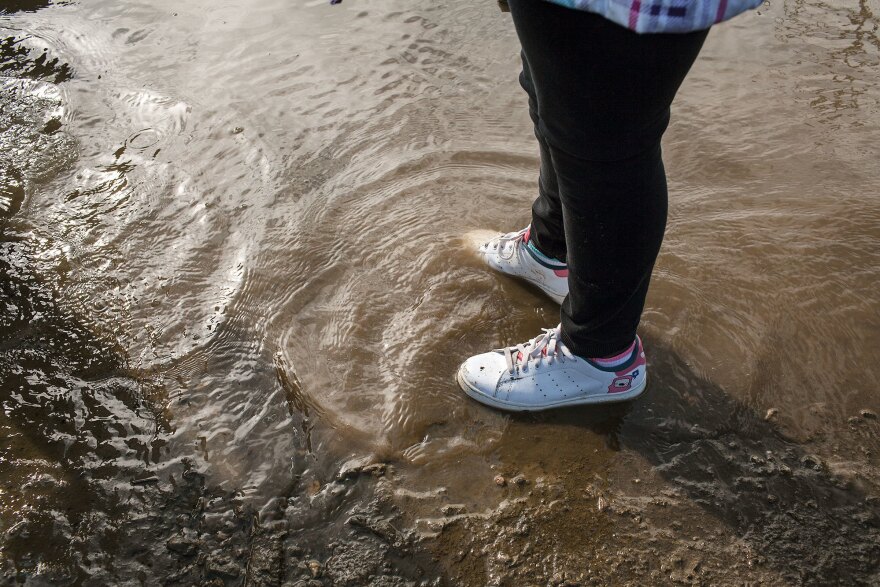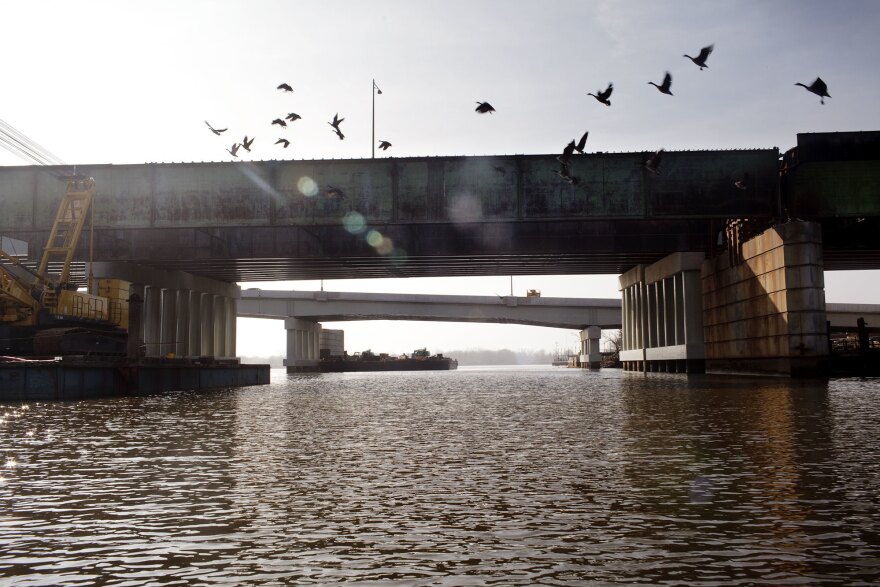It was the early 1940s, when 12-year-old Charles "Bob" Martin, a Washington, D.C., kid who had always loved the water, decided to try to rent a boat. So he headed down to the waterfront to ask about the cost. A white man working there told him it would cost $5 to reserve a rowboat, plus a quarter for every hour on the water.
The next week Martin headed back to the waterfront with money he'd cobbled together from his job at a local pharmacy. He saw the same man with the boats for rent.
What happened next remains seared into his memory.

"This man broke my heart," he said. "I said, 'I got the quarter,' and the man looked at me, and I'm quoting him now. He says: 'I don't know why you keep running around down here to rent a boat, because we do not rent these boats to no — the n-word — so you can just leave here and just not even come back.' "
The encounter broke Martin's heart. But not his resolve. "I'm going home crying to my mom," Martin remembers. "I said 'Mom, I'm gonna get me a boat.' "

Around that same time, just upriver from where Martin was turned away, Lewis T. Green, a shop teacher at a D.C. high school, was trying to create a boat club for himself and other black boaters in the city. Green asked federal officials for permission to use land for his fledgling group, but didn't have much luck. He eventually got the attention of the philanthropist Mary McLeod Bethune, who in turn contacted her friend, Eleanor Roosevelt, who was then-first lady of the United States. Soon enough, the Interior Department allowed Green the use of a small plot by the railroad tracks near the Anacostia River. It's where Seafarers Boat Club — now Seafarers Yacht Club — began and where it still stands.
Bob Martin, the young boy who vowed to get himself a boat, would eventually take over as the commodore, or president, of that club in the mid-1960s.

It was Martin who charted the course for the Seafarers, which has become a mainstay on the Anacostia.
One of his first acts as leader of Seafarers was to build a clubhouse on the overgrown, overlooked plot of land so that his fellow boaters, along with their friends, family, and anyone else who wanted to join them, would have a place to congregate.
"I don't hold [the incident with the boat renter] against nobody because that's the way things were at that time," Martin said. "Whether you're accepted or not, you make a way for yourself. That's just what we did — made way for ourselves, and we're still here."

"We have quite a few members now, we do," Martin says. "We have the members, we have the members' friends, and their families come down all the time, admire the place. People want to have a dance, or wedding, or you name it, it has happened in this clubhouse."

James "AJ" Hall had been hanging out at Seafarers Yacht Club since the 1990s, when a friend brought him to some parties there. Hall said to himself that if he ever got the money, he would become a "captain," which is what Seafarers calls its members who own boats. It wasn't until around 2012 that he became a full member, with the help of his cousin, from whom Hall also received his boat, The Raven. In 2013, he called his Seafarers' membership "a blessing from the man upstairs — it's a poor man's dream come true."

Hall said that he was restless in his younger days. "I didn't have a lot of patience in life," he said. "But spending time on the water, fishing, it just taught me patience, you know?"

"This is one of the most promising lands, blessed lands, in the city," Hall said. "Natural resources, natural resources. It's off the chain in the summer. You catch a fish every five, 10 seconds. That's how many catfish out there. This catfish heaven."
Hall ran a plumbing, heating and cooling business and would often stop in at Seafarers between jobs. His evenings were often spent on The Raven, fishing for catfish. He spent Halloweens cooking out on the boat. He held his family's Thanksgiving oyster roast at the clubhouse. When his sister was killed, her repast was held at Seafarers. Even as Hall fought cancer, he spent time on his boat, until he eventually got too sick to make it to the docks.
"You can sit out here and read your books, and you can understand what's going on," Hall said. "No distraction, you know? You gotta have that peace of mind. ... The rest will come. The rest will come. It's really peaceful out here ... until the train comes."

Hall died in December 2016. His family held his repast at the Seafarers' clubhouse, the place where he had found so much peace.
That tranquility is why so many people say they're drawn to the river and the yacht club — it's an oasis amid the din of Washington, D.C. Seafarers wants to remain a refuge for anyone who wants to be a part of it, even as things change near their once-overlooked corner of the river. And things are changing, quickly.

The Anacostia River is often called D.C.'s "Forgotten River" — shallower and tougher to navigate than the Potomac. It's historically polluted by industry waste, sediment, sewage and just plain garbage. For a long time, though, the Seafarers have thought of themselves as the Anacostia's stewards.


Back in the mid-1980s, Howard Gasaway, a long-time captain and former commodore at Seafarers, was approached by then-mayor Marion Barry. "Howard, why don't you clean up this river?" the mayor asked. Gasaway's response: "Mr. Mayor, it's not my river — It's your river." But Gasaway took Barry's suggestion to heart, and corralled his fellow Seafarers to create the first Anacostia River Earth Day clean-up back in 1985. It's an event they've taken part in ever since.

In recent years, the much-maligned river has become more attractive to developers looking for new land near the city's waterfront. Luxury condos, event venues, and parks have been sprouting up all around Seafarers, which is attracting more new faces to the area. And all that new activity is encroaching on the club's tranquil, off-the-beaten-path vibe.
Tony Ford, Seafarers' current commodore, knows this. Ford wants to make sure the organization remains accessible — and sustainable.

"I think the people before us made a mark here, so our time is to try to get this club stabilized," says Ford. "The community of boaters is very tight, everybody down here kind of knows each other. If you don't know them by name, you know them by face," says Ford. "The challenge that we're facing now is that we know that development is coming."
Ford hopes that nearby real estate developments and rising property values won't compromise some of Seafarers core values.

"The goal is to maintain what we call 'affordable boating,' but more importantly 'affordable boating' for minorities," says Ford. "It's not just about black, it's not just about white, it's not just about Hispanic, but when I say minorities, [I mean] minorities on the economic scale."
Seafarers is also facing challenges — from Mother Nature and Father Time. The river adjacent to the club is silting in; as it becomes gradually shallower, it's impossible for bigger boats to enter and exit the dock except at high tide. "The siltuation isn't going to stop, it's going to come to a point when it's real low tide some of these boats are literally sitting in mud," Ford says. That can ruin the engines of boats. Dredging the river might be one option, but it's a political long shot and could cost upward of $20 million. Some Seafarers think the condition of the river has discouraged new boaters from joining their ranks. At the same time, Ford wants the club to attract younger boaters to their tight-knit organization, as its current members get older.

"You have the Baby Boomers, Generation X-ers, that's pretty much who is here now," says Ford. "The next generation is the Millennials. Because of all of the political things that we've had to go through trying to maintain down here, there's not been enough outreach to the Millennials the way that they need to be," he said. But Ford wants to teach these kids the Seafarers' way too, "because we think that's just as important."
As the club steers through the uncertainty brought on by gentrification and the river's ecological challenges, some members would rather stay put at the club's historic location, where it's been for over half a century. But other members, who are generally younger, want the club to move downriver to a deeper, more navigable stretch of the Anacostia where they can take their boats out more easily.

Ford wants to split the difference — pursuing a temporary move while maintaining Seafarers' current spot, in the event that the nearby riverbed is dredged. That way, the Seafarers could ultimately return to the place that's been a sanctuary for working people in the area for seven decades.
"This is everyone's Shangri-La,'" says Cornell Brown, a Seafarers captain. That's Bob Martin's phrase — everyone's Shangri-La — but Brown shares the same sentiment. "Once you find Seafarers, it seems like you might want to be a part of Seafarers. Just being by the water. Just being around people ... somebody that looks like you."
Copyright 2023 NPR. To see more, visit https://www.npr.org.







